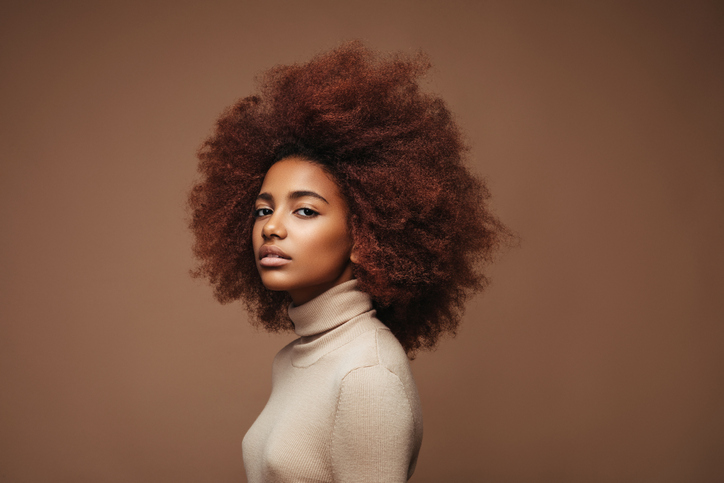
Source: CoffeeAndMilk / Getty
Let’s talk about dandruff. It’s a Debbie Downer when it comes to scalp health, peppering your hair and covering your clothing in embarrassing flakes. For some, it’s a sign that it’s simply time to give your scalp a deep cleansing, but for others, it’s a consistent issue. For all of us though, it grows in one way or another because of something present on each and every one of our scalps: yeast.
“We all have yeast that live on our scalps,” says Dermatologist and Hair Wellness expert Dr. Yolanda Lenzy. She’s partnered with Dove to help women of color combat hair issues. “Different times of the year, different things we’re going through, that yeast can overgrow. You can go through periods where you’re getting more itching, flaking, things like that.”
To deal with an overgrowth of yeast, Lenzy recommends active shampoos that include the ingredient zinc pyrithione for dandruff treatment. It’s present, for example, in Dove’s Dermacare line.
“That active is really good at helping to decrease that yeast that builds up on the scalp,” she said.
For those with ongoing dandruff issues, Dr. Lenzy recommends putting an active shampoo featuring the zinc complex on your hair while it’s dry ahead of washing it. After letting it sit for five or 10 minutes, you can then lather up the shampoo and rinse it out. If your hair needs extra moisture, she says you can follow it up with a moisturizing shampoo, like the sulfate-free option from Dove’s Amplified Textures line.
“I like to combine an active with a moisturizing shampoo,” she said. “That strategy usually works well. I usually like the active shampoo to sit on the scalp for a little bit longer than just an immediate, normal wash. That’s why I tell patients put it on before you get in the shower and while your hair’s still dry. Then you can lather it up.”
It’s recommended that you give this routine a try for four to six weeks if you’re washing your hair once a week. By that length of time, you should be able to gauge whether this really helps with your scalp issues or not. If it doesn’t help, seek out a dermatologist who can then prescribe a medicated shampoo (women breastfeeding aren’t able to use those, though).
As for caring for your scalp after the washing process, Dr. Lenzy says that oiling your scalp when it’s clean can actually exacerbate dandruff issues. Therefore, she says scrap “greasing” the scalp in favor of moisturizing all of your hair.
“I’m actually not a big fan of oiling the scalp,” she says. “When you oil the scalp, that provides for the yeast that lives on our scalp. So while it initially takes down the dry flakes, if you go in the next day and try to scrape it up, it comes up even more.”
“If you need to do moisture, do it on the shaft of the hair but not on the scalp itself,” she added. “We actually produce a lot of sebum on our scalp, but with afro-textured hair, the sebum does not travel down the hair shaft. It stays at the scalp level and that’s what makes the dandruff and things worse.”
Scalp massages are a great way to help distribute that sebum from the scalp to other parts of the hair.
So if you’ve struggled with a flaky scalp and wondered how to deal with it, you have a new regimen to try. Apply an active shampoo with zinc pyrithione to your scalp and let it sit before washing, then follow up with a moisturizing shampoo. Once dry, moisturize all of your hair, as opposed to letting oils sit on the scalp and worsening dandruff issues. Repeat about once a week, especially as the approaching cold weather months dry out hair. And if after four to six weeks you have seen an improvement in your scalp health, you’ve found the routine for you. Thank us later.









